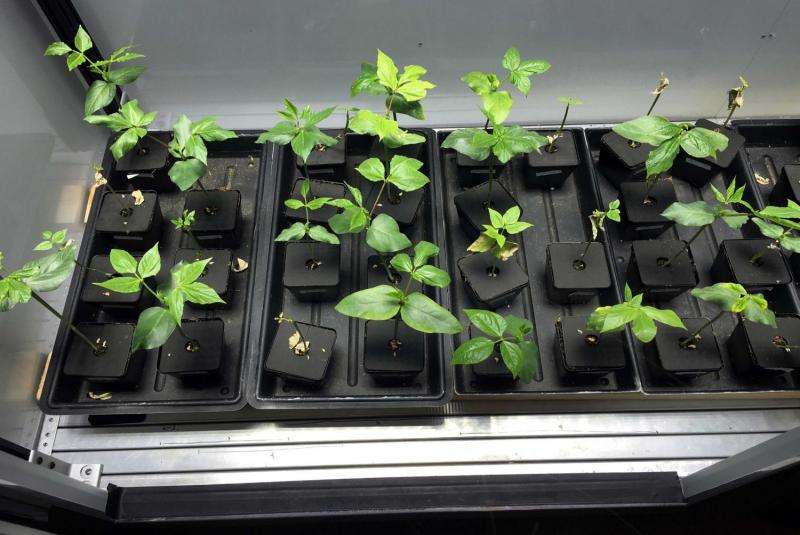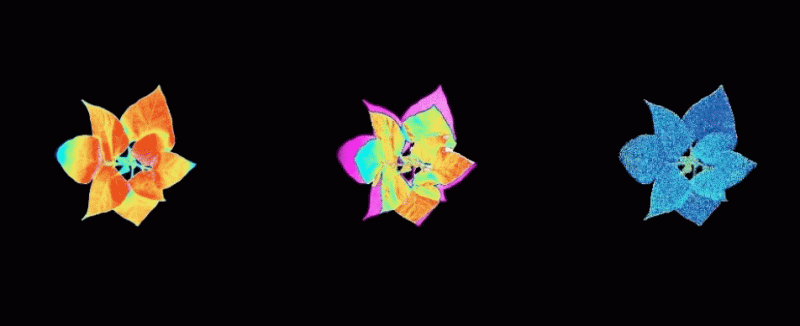Protecting plants from the power of sunlight

It's 11pm. You don't feel good. Your palms are clammy, your mind is racing, and you just can't fall asleep. As a precaution, you measure your vitals. Blood pressure is 160/95, worryingly high. You take another measurement ten minutes later: still high.
The first thing the following morning, you are on your way to the doctor's, drumming up scenario after nightmarish scenario about what went wrong. But when you get examined, your numbers look fine.
Blood pressure can change drastically over hours or even minutes, but that pales in comparison to plant status, which can shift in a fraction of a second as light flickers or wind blows.
Research is showing that the speed at which plants adjust to changes in their surroundings is vital to their health. But a major problem for scientists has been measuring these changes.
The Kramer lab is blazing the trail to solve this puzzle, driven by an ambitious goal. They want to improve plants' photosynthesis in order to increase crop yield, so we can better cope with the pressures of feeding billions more people with limited arable land; or of powering our cars and planes with biofuels, in order to curb pollution.
In a new study, published in the journal Plant, Cell and Environment, Steffie Tietz, a former post-doc in the Kramer lab, proposes a way to measure, in realtime, one of those changes: how plants prevent burn out from too much sunlight.
NPQ: sunlight protection
In order to capture real-time measurements, our research methods need revising, Steffie says.
"Most previous scientific work has been done in laboratories, where conditions are highly controlled. But nature is very different, and we are finding that many lab experiments don't accurately reflect what happens to plants in their natural habitats."
That's because life for a plant is a constant struggle. Light intensities flicker as clouds cover the sun, rain comes and goes, caterpillars get hungry. And plants can't run when things get bad.

So, plants have evolved intricate strategies to adjust to continuously changing surroundings. One of these, called non-photochemical quenching (NPQ), protects plants from too much sunlight.
"NPQ tells us how much light plants are getting rid of when they are exposed to a lot of it," Steffi says. "Otherwise, plants can get burned out, even die."
It turns out plants have to switch between gathering light and getting rid of it, tens of times, every millisecond, just to survive day by day!
But protection comes at a cost. Getting rid of light, plants' main source of energy, can potentially slow down photosynthesis.
And the system is not foolproof. When light or other conditions fluctuate faster than the plants can handle, they never really adjust well, which can be both wasteful and dangerous.
"It's like driving down a twisty road with a slow steering wheel. We either have to slow our speed way down and get to our destination late, or we risk crashing."
Improving the balancing act
The Kramer lab is trying to find the genes that control the speed of NPQ so they can make plants with faster response times. That means less light wasted and more energy produced.
To do this, they need to measure NPQ in a large number of different plants under different conditions.
But the standard techniques take far too long, up to hours, and they can only measure one leaf at a time. "This really slows down research, and we end up missing a lot of the important responses in the entire plant," says Steffie

It's like taking 2 hours to measure your blood pressure - almost anything you do, like moving, eating a snack, getting spooked by a scary clown… would mess the results.
Another issue with the older methods is that they sometimes confuse other processes for NPQ. For example, if leaves move during testing, or the chloroplasts change their positions within the leaves, the measurements can be far off.
Taking a proper reading
The Kramer lab specializes in tackling this type of scientific problem. Kramer has gathered scientists, engineers, programmers, and product developers to create technologies that are teaching us about plants and how they survive in their surroundings.
Based on some equations that Kramer solved, Steffie and her lab mates developed a new method that can make movies of photosynthesis and NPQ in hundreds of plants, simultaneously.
The experiments take seconds, rather than hours to complete, and the method is not prone to the errors found in the old techniques.
Crucially, Steffie says, she has shown that these methods make reliable measurements in the real world, either through lab simulations or directly in the field.
"This means that we can see how the plants respond in the field, where it really matters. We can then use this information to guide farmers to breed better crops in particular environments, even down to the level of individual farms."
The ideal is to incorporate NPQ measurements in future studies on food crops, like corn or beans, that sustain communities worldwide. Steffie thinks scientists will jump on board. The method is already being employed worldwide in hundreds of labs and smallholder farms, and it is easily adaptable to commonly used scientific devices (Licor, Hansatech, Walz).
On their end, the Kramer lab is already taking the NPQ pulse of algae, another abundant photosynthetic organism ripe for biotech and renewable energy applications.
Provided by Michigan State University





















